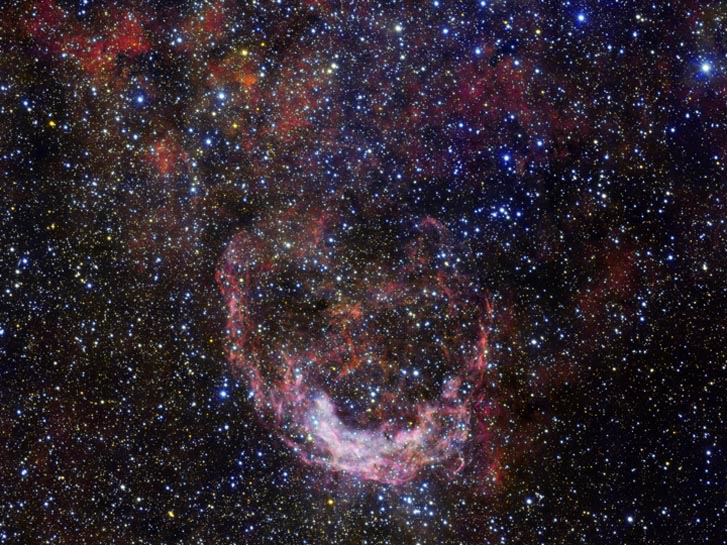
Emission nebula, H II Region
RA 10h 18m 6.38s Dec -57° 55' 29.26"
Carina
12,000 light years
20 x 15 arcminutes
53.05 x 38.15 arcminutes
North is 89.9° right of vertical
ESO
July 30, 2018
ABOUT THIS IMAGE:
This ESO image shows a crescent-shaped cocoon of gas and dust - a nebula known as NGC 3199, which lies 12,000 light-years away from Earth. It appears to plow through the star-studded sky like a ship through stormy seas. This imagery is very appropriate due to NGC 3199's location in Carina - a southern constellation which is named after the keel of a ship!
NGC 3199 was discovered by British astronomer John Herschel in 1834 as he compiled his famous catalogue of interesting night sky objects. The nebula has been the subject of numerous observations since, including those by ESO's 8.2-meter Very Large Telescope (eso0310, eso1117), and 2.6-meter VLT Survey Telescope (VST). The latter made the observations that comprise this image. The nebula's bright crescent feature is now known to be part of a much larger but fainter bubble of gas and dust.
The nebula contains a notable star named HD 89358, which is an unusual type of extremely hot and massive star known as a Wolf-Rayet star. HD 89358 generates incredibly intense stellar winds and outflows that smash into and sweep up the surrounding material, contributing to NGC 3199's twisted and lopsided morphology.
The
VST, which began operations in 2011, can image a large area of sky at
once - an area twice the size of the full Moon - with its 256-megapixel
camera, OmegaCAM. This allows it to characterize interesting objects which
its larger neighbor, ESO's Very Large Telescope, can then explore in even
greater detail.